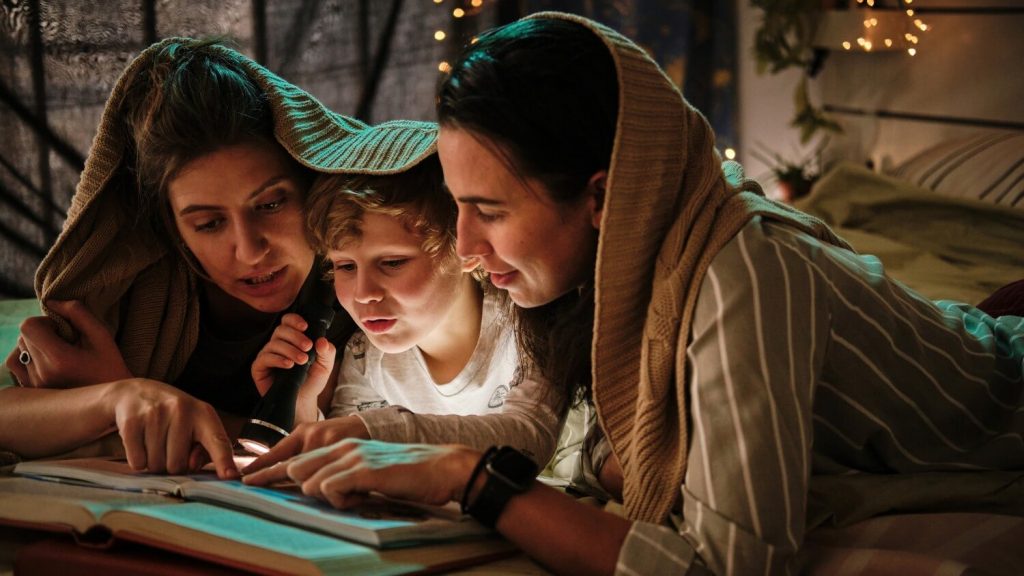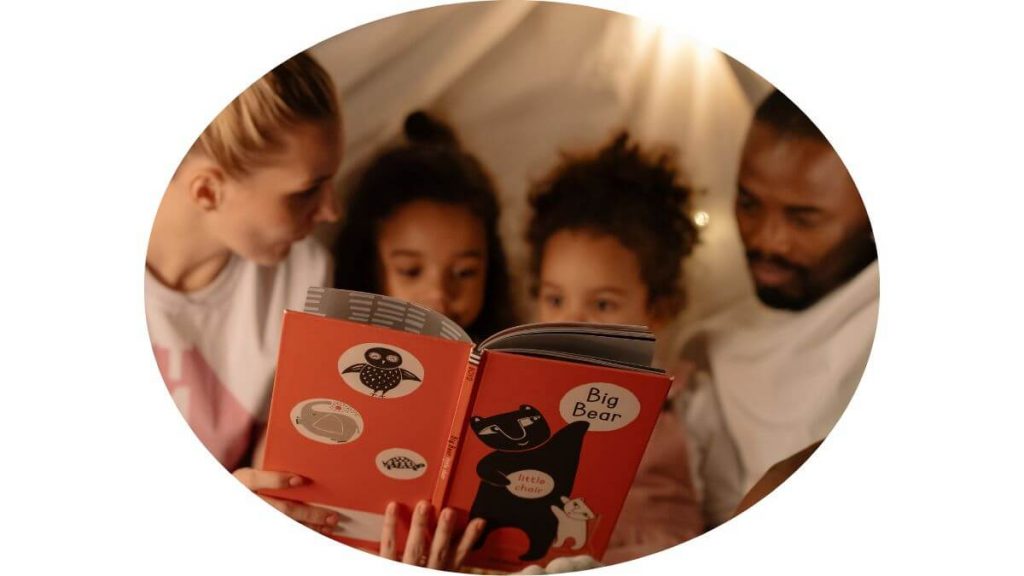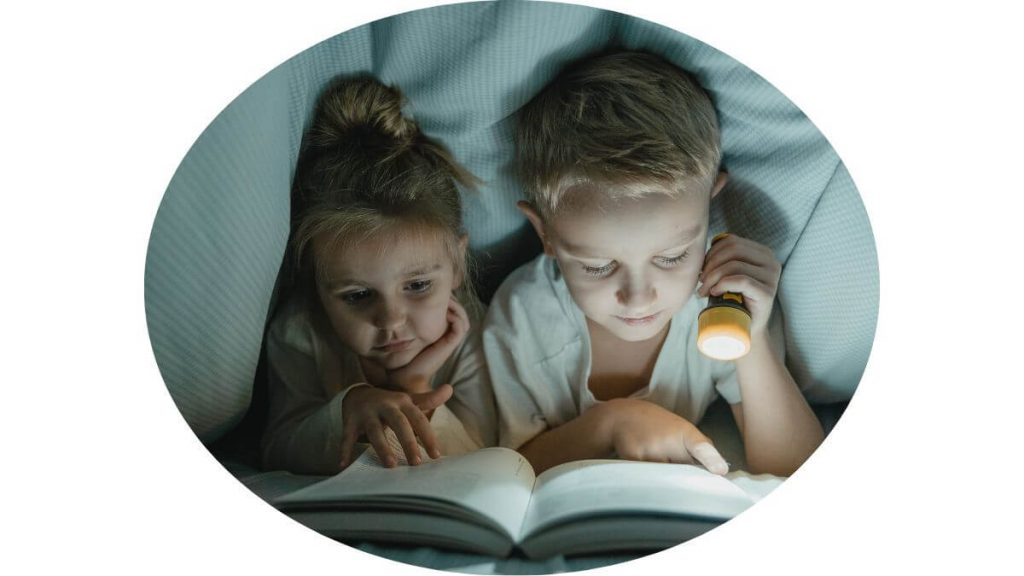Influence of Reading to Children on Early Language Development


As parents, you’re at the helm of your child’s development, and one of the most crucial aspects to nurture is their early language development. This journey is vital because it lays the foundation for your child’s ability to communicate, comprehend, and engage with the world around them.
Explore our related article about the benefits of early childhood education.
From their first babbling words to the intricate sentences they construct, language is the gateway through which your child explores, expresses, and understands their experiences. It’s the tool that equips them to share their thoughts, emotions, and desires, making it an indispensable skill for life.
Did you know that reading to your baby as young as 10 months old can set the stage for strong language skills later on? Researchers have discovered that exposing infants to books, even before they can talk, can be a game-changer. The soothing sound of your voice, coupled with the colorful images in picture books, can captivate their attention and stimulate their developing brains.

Reading to your child is like gifting them a treasure trove of words. Every page, every story is a new adventure in language. As you read, they learn new words, understand their meanings, and start using them to express their thoughts and feelings.
Imagine the delight when your child discovers a new word in a story and excitedly incorporates it into their own conversations. This process of vocabulary expansion is a fundamental step in their language development, enabling them to communicate more effectively and articulately.
Beyond the words themselves, reading stimulates your child’s growing mind in profound ways. It’s akin to a mental workout that flexes their memory, enhances their comprehension, and sharpens their problem-solving skills.
As you read together, your child’s brain is busy making connections, predicting outcomes, and comprehending complex narratives. These cognitive gymnastics prepare them for the academic challenges that lie ahead, fostering critical thinking and analytical abilities.
In a world filled with distractions, the act of sitting down with a book demands a level of patience and focus that is invaluable for your child’s development. As they listen to your voice and follow the story, they learn the art of sustained attention—a skill that serves them not only in reading but also in their daily endeavors.
This enhanced concentration lays the groundwork for effective learning, helping them absorb information, stay engaged in classroom settings, and tackle tasks with diligence.

When you open a book with your child, you’re not just sharing stories; you’re sharing precious moments that foster a profound emotional connection. In these intimate reading sessions, you create memories that will stay with your child for a lifetime.
As they nestle in your lap, listen to your voice, and explore the pages together, they experience a sense of security, warmth, and love. These emotional bonds are the building blocks of their self-esteem and emotional well-being.
Reading is not a solitary endeavor; it’s a shared experience that encourages dialogue and interaction. As you discuss the storyline, ask questions, and exchange ideas, your child is learning the art of conversation and the nuances of effective communication.
These interactions provide them with practical lessons in listening, taking turns, and expressing their thoughts—a valuable skill set that extends far beyond the pages of a book. It’s the foundation upon which they build their social relationships and navigate the complexities of human interaction.
The pages of books often introduce characters who face challenges, emotions, and dilemmas akin to those your child encounters in their own life. These fictional journeys offer your child a window into the hearts and minds of others, nurturing empathy and a deeper understanding of the world.
As they empathize with characters, discuss their experiences, and explore the consequences of their actions, your child begins to develop a broader perspective. They learn to appreciate diversity, comprehend different viewpoints, and embrace the richness of human experiences.

Selecting the right books for your child is a bit like finding the perfect puzzle piece. For younger children, choose books with vibrant colors, simple words, and engaging pictures that capture their imagination. These books provide a sensory feast that captivates their attention.
Older kids delve into more complex narratives that challenge their growing intellect. Consider their interests and preferences as you select books; whether it’s stories of adventure, animals, or magical lands, tailor your choices to ignite their curiosity.
The power of consistency cannot be overstated when building a reading habit. Establishing a regular reading routine, whether it’s bedtime stories, afternoon adventures, or even reading during meals, helps your child associate reading with comfort and joy.
This routine provides a sense of security, creating an anticipated time of day when you both come together to explore new worlds and ideas. It’s a shared ritual that fosters a lifelong love for reading.
As you read together, encourage active engagement. Don’t just read the words on the page; delve into the story. Pose questions such as “What do you think will happen next?” or “How would you feel in that situation?” This prompts your child to think critically, fostering a deeper connection to the narrative.
Invite them to express their opinions about the story and its characters. Encourage them to predict outcomes, discuss motivations, and even share personal experiences related to the story. These discussions transform reading into a dynamic conversation, enhancing their comprehension and critical thinking skills.

Reading aloud exposes your child to the intricate symphony of sounds that make up language. They hear the rhythm, melody, and nuances of spoken words, enhancing their phonological awareness.
This heightened awareness is a critical step in learning to read, as it helps them recognize the sounds that make up words and how those sounds blend together. It’s the foundation upon which their future reading skills are built.
Through shared reading experiences, your child begins to grasp the fundamental principles of print awareness. They learn that words are read from left to right and from top to bottom—a fundamental concept that paves the way for independent reading.
They develop print awareness as they follow along with their finger, track words across the page, and understand the direction of reading. This skill is crucial for recognizing letters, understanding punctuation, and navigating written text effectively.
Understanding a story’s plot, characters, and events is not merely about following along; it’s a critical step in developing reading comprehension skills. By reading together, you help your child grasp these complex concepts, setting the stage for future academic success.
Encourage your child to ask questions about the story and express their thoughts on its themes and messages. These discussions promote critical thinking and analytical skills, enabling them to delve deeper into the stories they encounter and make meaningful connections.

It’s not uncommon for children to have shorter attention spans, especially when they’re younger. If your child appears restless during reading sessions, consider starting with shorter stories and gradually increasing the reading time.
Learn about Attention Deficit and Hyperactivity Disorder (ADHD) in children
You can also make reading more interactive by using props, asking open-ended questions, or encouraging them to draw pictures related to the story. These techniques help sustain their interest and engagement.
Not all children immediately embrace the world of books, and that’s perfectly normal. If your child seems hesitant about reading, be patient and explore a variety of genres and themes until you discover what captivates their interest.
Visit your local library together and let them choose books that pique their curiosity. Sometimes, it’s the freedom to explore and make their selections that ignites a love for reading.
If your household embraces multiple languages, consider incorporating them into your reading routine. Multilingual exposure enriches your child’s linguistic abilities and broadens their cultural understanding.
You can read books in different languages, celebrate cultural festivals and traditions, and even explore bilingual books that seamlessly integrate two languages. This multicultural approach to reading not only enhances their language skills but also fosters an appreciation for diversity and inclusivity.
Here are other resources about bilingualism you may want to explore:

The act of reading to your child from a tender age sets in motion a journey of profound significance. It equips them with essential skills that extend far beyond the realm of language, touching every facet of their lives.
These skills empower them to communicate effectively, think critically, empathize with others, and embark on a lifetime of learning and discovery. Reading is not just a pastime; it’s a gateway to a world of endless possibilities.
Above all, remember that reading should be a joyful experience—a voyage of exploration and wonder. Encourage a love for books by cultivating an environment where reading is celebrated, cherished, and embraced as a gateway to endless adventures.
Share your own enthusiasm for reading with your child. Let them see you engrossed in books, and lead by example. Create a family culture that values reading as a cherished tradition, one that they will carry with them into adulthood.
To kickstart your reading journey with your child, here’s a selection of recommended books tailored to different age groups:
These titles are just the tip of the iceberg. Dive into the world of children’s literature, and you’ll discover a vast ocean of captivating stories to share with your child. As you embark together on the wondrous journey of language development and a lifelong love affair with reading, these books will be your trusty companions.